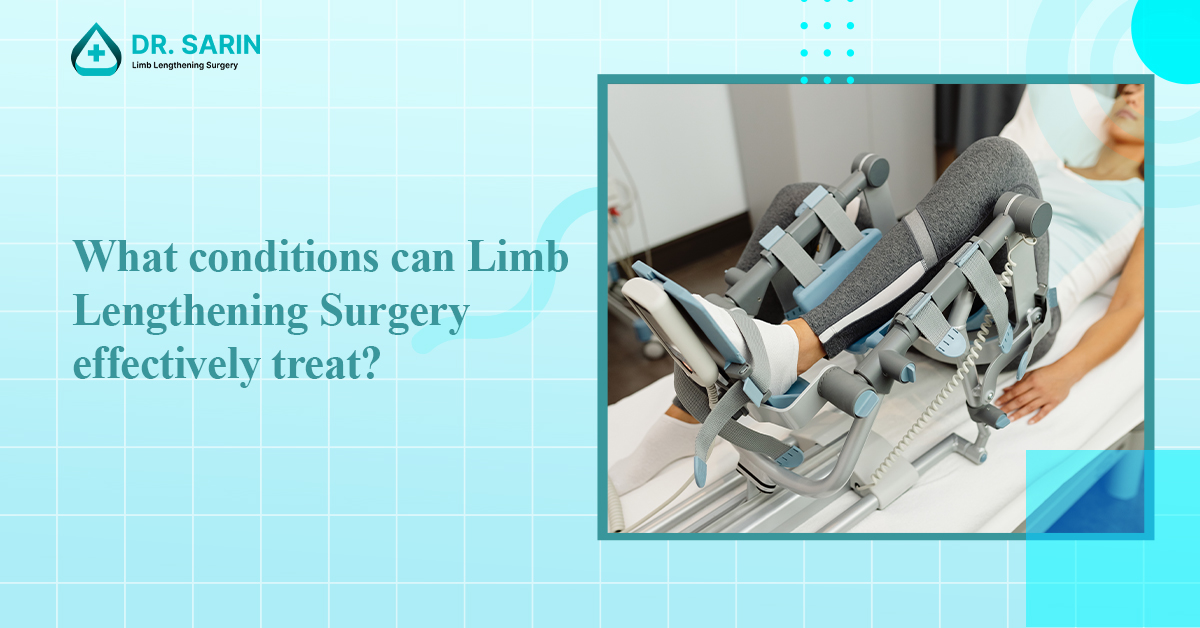Limb lengthening surgery is a specialized orthopedic procedure used to increase the length of bones, typically in the legs or arms, and can effectively treat several medical and cosmetic conditions. Below is a concise overview of conditions it addresses, based on medical insights and standard practices:
Conditions Treated by Limb Lengthening Surgery
1. Congenital Limb Length Discrepancy:
Description: Conditions present at birth, such as congenital short femur, fibular hemimelia, or proximal femoral focal deficiency, where one limb is shorter than the other.
Effectiveness: Surgery equalizes limb lengths, improving function, gait, and reducing compensatory issues like scoliosis or joint pain.
2. Acquired Limb Length Discrepancy:
Description: Discrepancies caused by trauma (e.g., fractures), infections (e.g., osteomyelitis), or growth plate injuries that impair bone growth.
Effectiveness: Restores symmetry, enhances mobility, and prevents long-term complications like arthritis or back pain.
3. Short Stature Disorders:
Description: Genetic or endocrine conditions like achondroplasia (a common form of dwarfism), Turner syndrome, or hypochondroplasia, where individuals have disproportionately short limbs or overall height.
Effectiveness: Increases height (often 6–12 inches in achondroplasia) and improves limb proportions, enhancing physical function and quality of life.
4. Bone Deformities:
Description: Conditions like bowlegs (genu varum), knock-knees (genu valgum), or rotational deformities often associated with skeletal dysplasias or trauma.
Effectiveness: Corrects angular deformities while lengthening bones, improving alignment and weight-bearing capacity.
5. Nonunion or Malunion Fractures:
Description: Bones that fail to heal properly (nonunion) or heal in a misaligned position (malunion) after fractures.
Effectiveness: Stimulates bone regeneration and corrects length or alignment, restoring function.
6. Bone Defects or Loss:
Description: Loss of bone due to tumors, infections, or severe trauma, creating gaps or shortened segments.
Effectiveness: Regenerates bone through distraction osteogenesis, filling gaps and restoring limb length.
7. Cosmetic Height Enhancement:
Description: Elective lengthening for individuals seeking increased height due to personal or social reasons, without underlying medical conditions.
Effectiveness: Can add 2–6 inches in height, improving self-esteem, though it carries risks and requires careful psychological evaluation.
Procedure, Effectiveness Factor, Risks
Procedure: Limb lengthening or height increase surgery typically involves cutting the bone (osteotomy), attaching an external fixator or internal device (e.g., PRECICE nail), and gradually lengthening the bone through distraction osteogenesis (1 mm/day). The process includes lengthening and consolidation phases, lasting months.
Effectiveness Factors: Success depends on patient age, bone quality, compliance with physical therapy, and surgeon expertise. Children and adolescents often achieve better outcomes due to active growth plates.
Risks: Includes infection, nerve damage, joint stiffness, or prolonged recovery, requiring careful patient selection and postoperative care.
Specific Considerations
Achondroplasia: Lengthening is common for arms and legs to improve reach and mobility, often performed in stages.
Limb Discrepancy: Effective for discrepancies >2 cm, where shoe lifts are insufficient.
Cosmetic Cases: Controversial due to high costs (₹10–50 lakh in India) and risks; not covered by insurance.
If you’re considering this surgery for a specific condition or have a case in mind (e.g., for yourself or someone else), please share more details, and I can provide insights or guide you on next steps, such as finding specialists in India.
You May Also Like to Read:



